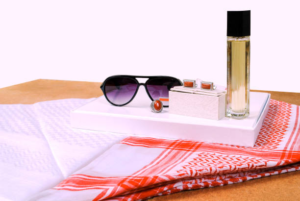14 ga blunt needles Applications, Benefits, and Considerations
14-gauge blunt needles are essential tools across various industries and fields, offering versatility and safety for both professionals and hobbyists. Their unique design — with a rounded, non-sharp tip — sets them apart from standard sharp needles, making them indispensable for applications where precision and reduced risk of accidental injury are crucial. In this article, we will explore the features, uses, and benefits of 14 ga blunt needles, delving into their diverse applications in medicine, industry, and crafting.
Understanding the Basics of 14 ga blunt needles
The term “14-gauge” refers to the needle’s diameter. Gauge sizes follow a standard measurement system where smaller numbers indicate larger diameters. A 14-gauge needle has an outer diameter of approximately 2.1 mm, making it relatively thick compared to higher-gauge needles (e.g., 22- or 26-gauge). This large diameter is ideal for transferring liquids of varying viscosities, making 14 ga blunt needles highly versatile.
2. The Blunt Tip Design
Unlike sharp needles designed for piercing skin or tough materials, blunt needles feature a rounded, flat tip. This design ensures they can interact with surfaces or materials without penetrating them, which minimizes risks of injury or damage.
3. Materials and Construction
Most 14-gauge blunt needles are made from medical-grade stainless steel due to its durability, corrosion resistance, and ease of sterilization. The hub — the part connecting the needle to a syringe or dispensing device — is typically made of sturdy plastic or metal and comes in configurations like Luer Lock or Luer Slip for secure attachment.
Key Applications of 14-Gauge Blunt Needles
Medical and Clinical Use
- Medication Dispensing and Preparation
Blunt needles are commonly used to draw medications or fluids from vials. The blunt tip prevents coring, where sharp needles pierce vial stoppers and leave behind small fragments. This ensures the solution remains free from contamination. - Irrigation and Flushing
In wound care, 14-gauge blunt needles are attached to syringes for irrigating wounds, ensuring effective cleaning without causing additional trauma. They are also used to flush catheters and medical tubing. - Non-Injection Procedures
Blunt needles are ideal for delivering fluids into devices or systems without penetrating soft tissues, reducing the risk of accidental needlestick injuries among healthcare professionals.
Industrial and Commercial Applications 14 ga blunt needles
- Dispensing Thick Fluids
In industries like manufacturing and electronics, 14-gauge blunt needles are used to dispense adhesives, sealants, or lubricants with precision. The large diameter allows the handling of viscous materials effectively. - Refilling Small Containers
Blunt needles are used to fill or empty small containers or cartridges with liquids, ensuring minimal waste and mess. This is particularly useful in ink refilling or e-liquid dispensing for vaping devices. - Precision Application
When working with sensitive equipment, the blunt tip ensures precise delivery of substances without the risk of damaging components.
Previous article; The Ultimate Guide to hid d3s headlamp passenger wire
Crafting and Hobbyist Use
- Controlled Application of Liquids
Artists and hobbyists use blunt needles for detailed work such as applying glue, paint, or resins. The 14-gauge size allows handling thicker substances while maintaining precision. - DIY Projects
For enthusiasts working on DIY projects, 14 ga blunt needles are valuable for tasks like injecting wax, assembling models, or creating intricate designs using liquid mediums.
Advantages of 14-Gauge Blunt Needles
1. Safety
The blunt tip design significantly reduces the risk of accidental punctures or injuries, making these needles safer to use than sharp alternatives. This feature is particularly important in medical and clinical settings, where needlestick injuries can lead to serious health risks.
2. Durability
Constructed from high-quality stainless steel, 14-gauge blunt needles are resistant to bending or breaking, even under repeated use. Their robust design ensures reliability in demanding applications.
3. Versatility
The 14-gauge size and blunt tip combination make these needles suitable for a wide range of tasks, from handling viscous fluids to performing delicate applications requiring precision.
4. Reusability
Many blunt needles can be sterilized and reused, reducing waste and costs in industries where multiple uses are practical.
5. Reduced Material Damage 14 ga blunt needles
In applications involving delicate materials, the blunt tip prevents accidental piercing or damage, ensuring the integrity of surfaces and systems.
Choosing the Right 14-Gauge Blunt Needle
Factors to Consider
- Length
14-gauge blunt needles are available in various lengths, typically ranging from 1 to 3 inches. Shorter needles are suitable for precise applications, while longer needles are better for tasks requiring deeper reach. - Hub Compatibility
The needle hub must match the syringe or device it will attach to. Luer Lock hubs provide a secure, threaded connection, while Luer Slip hubs allow for quick and easy attachment. - Sterility
Depending on the application, you may need sterile needles (for medical use) or non-sterile ones (for industrial or crafting purposes). - Material and Coating
Ensure the needle is made of high-quality stainless steel. Some blunt needles feature additional coatings to enhance flow or reduce sticking, which can be beneficial for specific tasks.
Common Misconceptions About 14-Gauge Blunt Needles
- Blunt Needles Are Only for Non-Medical Use
While blunt needles are popular in industrial and crafting fields, they play a vital role in medical settings, particularly for non-injection procedures. - They Cannot Handle Thick Fluids
The 14-gauge size is specifically suited for handling thick and viscous substances like adhesives, making them ideal for tasks requiring larger-diameter needles. - Blunt Tips Are Less Effective
While they are not designed for piercing, blunt needles excel in precision and safety, often outperforming sharp needles in specific applications.
Safety and Best Practices
- Proper Handling
Always handle 14 ga blunt needles with clean hands or gloves to maintain hygiene, especially in medical or food-related applications. - Sterilization
For reusable needles, ensure proper sterilization between uses to prevent contamination. Autoclaving is a common method for achieving sterility. - Storage
Store blunt needles in a clean, dry environment, away from potential contaminants. Keeping them in sealed containers prolongs their lifespan and maintains their effectiveness. - Disposal
When a blunt needle reaches the end of its usability, dispose of it responsibly. In medical settings, follow local regulations for sharps disposal.
Innovations in Blunt Needle Design
Advancements in manufacturing technologies have led to the development of specialized coatings and materials for blunt needles. These innovations aim to enhance durability, improve flow rates, and reduce friction during use.
Some companies are also integrating ergonomic designs into needle hubs for easier handling and more precise control, benefiting both professionals and hobbyists.
Final Thoughts
14 ga blunt needles are indispensable tools with applications spanning medicine, industry, and the arts. Their large diameter and blunt-tip design offer safety, versatility, and precision, making them suitable for tasks ranging from wound irrigation to intricate crafting. By understanding their features and selecting the right needle for the job, users can maximize the benefits of this essential tool while minimizing risks.
Whether you’re a healthcare professional, industrial technician, or DIY enthusiast, 14-gauge blunt needles can streamline your work, ensuring safety and efficiency in every task.











Post Comment